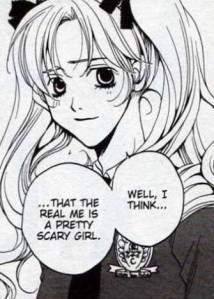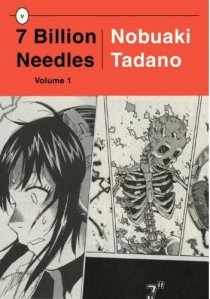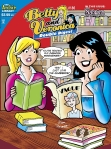March Story (Viz), written by Hyung Min Kim and illustrated by Kyung-il Yang, does not lead with its best foot, in my opinion. It’s nominally in the “comeuppance theatre” category of storytelling in that it’s largely episodic and features terrible but avoidable things happening to guest stars with a protagonist swooping in to try and minimize the damage. But unlike my favorite examples of comeuppance theatre, bad things don’t happen to these people because they themselves are bad, but because they’re kind of dumb. I’m going to put the rest of this entry behind a jump, because it’s less of a review than a spoiler-filled, inexplicably obsessive discussion.
In this comic, which originally ran in Shogakukan’s Sunday GX, beautiful objects can leave their admirers vulnerable to possession by evil spirits called “Ill.” In the first chapter, a young girl is explicitly warned not to touch unknown objects. She’s told what might happen, and she seems to grasp the possible consequences. Then she sees something pretty and sparkly lying around, and caution goes out the window with predictable results. March, our titular hero, tries to salvage the situation, but it’s hard to care all that much.
In the second chapter, a character has apparently reached out to March for assistance only to immediately and willfully prevent March from intervening in any constructive way. The reason for this is fairly skeletal, insufficient in any persuasive essentials since the supplicant is rendered in shorthand, and it’s hard not to suspect that this beautiful, European-esque landscape is filled with idiots and that Darwinian principles should be allowed to run their course, you know?
In the third chapter, March is sought out not by a victim of the objects that can wreak such havoc but by a dealer in curios who is apparently kind of a sadist. He knows he’s releasing ill-infected objects among his clientele, but he’s more interested in seeing how things will play out than in preventing them from happening in the first place. It’s novel, since the Ill’s victims in this case have no way of avoiding their misfortunes. But still, someone who knows better fails to act in a responsible, even sensible way.
It’s weird. It feels like the creators are absolving you from caring about what happens to their characters, though perhaps they just don’t have a particularly firm grasp on the difference between things that are tragic and things that are just kind of stupid. If a tree falls in the forest, should you feel badly for the person who runs to be under it when it crashes to the ground as people shout to warn them what the result will be?
The thing is, the fourth chapter is great. It’s creepy and tragic and roughly one thousand times more interesting than the chapters that come before it, and my regard should be evident in the fact that I’m reluctant to spoil anything that actually happens in the story. It makes you wonder how the earlier chapters would have read if you’d known March’s back story before you’d slogged through a bunch of pages of bad things happening to stupid people because they’re stupid.
I’m reminded of the experience of reading the first couple of volumes of Natsuki Takaya’s Fruits Basket (Tokyopop), which were undeniably generic. The events of those first two volumes, when viewed through the prism of later events and revelations, become essential only in retrospect, but the power of those later moments would not have been possible without slogging through the early bland bits. For people who will never be persuaded by a comparison to Fruits Basket, I’d throw in the first issue of Kurt Busiek’s Thunderbolts (Marvel), which seemed like a totally bland super-team comic until the last-page reveal in the first issue.
Am I saying that March Story is going to reach Fruits Basket or Thunderbolts heights? I have no idea, and the Fruits Basket-Thunderbolts analogy isn’t really very apt, because the power of the fourth chapter is entirely independent of anything that happened before. The earlier chapters suggest March as a master of ceremonies rather than a protagonist. One could successfully argue that the whole reading experience might have been more enticing if the first three chapters had been pitched entirely and the readers had been thrust into the middle of things, wondering about the tragic figure who would become the hero as opposed to the host who’s in every chapter.
But, unearned as my interest is by 75% of the first volume’s content, it does indeed have my interest for at least another volume. The book is beautifully drawn throughout, and while the creators only took one of four opportunities to indicate that they have anything interesting in mind for the series, they made more than any reasonable reader could have expected of that one opportunity.
Again… weird. Has anyone else read this? I’ve made a point of not reading any reviews, but I’ll happily add links now that I’ve rambled on at unnecessary length.





















